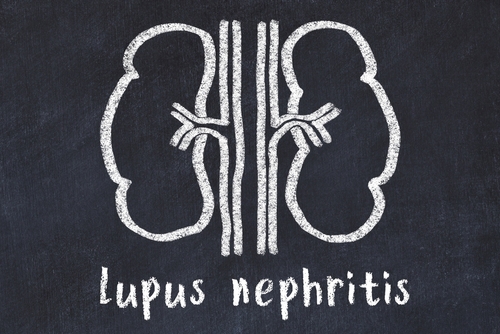
Use of angiotensin-converting enzyme inhibitors (ACE-Is) and angiotensin II receptor blockers (ARBs) is the gold standard for the treatment of hypertension, albuminuric chronic kidney disease (CKD), heart failure with reduced ejection fraction, and coronary artery disease. However, along with the benefits of treatment with ACE-Is and ARBs, there are also potential risks, including acute, largely hemodynamic reductions in estimated glomerular filtration rate (eGFR), hyperkalemia, and acute kidney injury (AKI).
Among individuals with lower eGFR, the risks of those adverse events are particularly relevant. Results of previous real-world studies have suggested that more than half of patients who initiated therapy with an ACE-I or an ARB discontinued within 5 years of the initial prescription; discontinuations were increasingly common among patients with more advanced CKD stage.
Guidelines from Kidney Disease Improving Global Outcomes call for temporary discontinuation of ACE-I or ARB therapy in patients with eGFR <60 mL/min/1.83 m2 “who have serious intercurrent illnesses that increases the risk of AKI.” However, the guidelines also emphasize to “not routinely discontinue [ACE-I/ARB] in people with eGFR <30 mL/min/1.73 m2 as they remain neuroprotective.”
Current evaluations of the risks and benefits of ACE-I/ARB therapy in patients with advanced CKD offer conflicting results. Yao Qiao, MPH, and colleagues conducted a retrospective, propensity score-matched cohort study to examine the association of ACE-I or ARB therapy discontinuation after decrease in eGFR to below 30 mL/min/1.73 m2 with the risk of mortality, major adverse cardiovascular events (MACE), and end-stage renal disease (ESRD). A secondary objective of the study was an evaluation of the association of ACE-I or ARB therapy discontinuation with the same end points among users who experienced a decrease in eGFR by ≥40% within 1 year, a surrogate end point for kidney failure used by the US FDA. Results of the study were reported online in JAMA Internal Medicine [doi:10.1001/jamainternmed.2020.0193].
The researchers utilized data from the Geisinger Health System that serves 45 counties in central and northeastern Pennsylvania. A total of 162,654 individuals who initiated therapy with an ACE-I or ARB between January 1, 2004, and December 31, 2018 were identified. Of those, 10,810 had decreases in outpatient eGFR to below 30 mL/min/1.73 m2 following therapy initiation. Following application of inclusion and exclusion criteria, the final study cohort included 3909 participants.
Of the 3909 study participants, mean age was 73.7 years, and 61.6% (n=2406) were female; 1235 discontinued ACE-I or ARB therapy within 6 months following a decline in eGFR to below 30 mL/min/1.73 m2, and 2674 did not discontinue therapy. Compared with the group that did not discontinue therapy, those who did were more often male, had lower eGFR, had higher serum potassium levels, had a higher prevalence of congestive heart failure, and were more likely to be receiving antiplatelet agents at the time of the decrease in eGFR. They were also less likely to have diabetes or to be taking statins and beta-blockers.
A total of 1205 participants in the discontinuation group were successfully matched to controls, for a total of 2410 individuals in the propensity score-matched sample. At baseline, the two treatment groups were well balanced on all covariates; the absolute standardized mean differences was below 0.1 for all covariates.
Follow-up continued for a mean of 2.9 years. During follow-up, 35.1% (n=434) of the 1235 participants who discontinued ACE-I or ARB therapy following a decline in eGFR to below 30 mL/min/1.73 m2 and 29.4% (n=786) of the 2674 who did not discontinue therapy died within 5 years after the baseline date of follow-up. Twenty-eight percent (n=347) of the 1235 patients who discontinued therapy following the decrease in eGFR restarted therapy during the follow-up period. In the propensity score-matched sample, following adjustment for baseline covariates, the association between discontinuation of ACE-I or ARB therapy and a higher risk of mortality remained (hazard ratio [HR], 1.39; 95% confidence interval [CI], 1.20-1.60).
During a median follow-up of 2.7 years, the risk of MACE during the 5-year period among the group who discontinued ACE-I or ARB therapy was higher than among those who did not discontinue therapy (40.0% [n=494] vs 34.0%, [901], respectively). The association between discontinuation of ACE-I or ARB therapy and the increased risk of MACE remained in the propensity score-matched sample (HR, 1.37; 95% CI, 1.20-1.56).
Seven percent (n=87) of participants in the group that discontinued ACE-I or ARB therapy with 6 months following an eGFR decline to below 30 mL/min/1.73 m2 developed ESRD within 5 years compared with 6.6% (n=176) of the group that did not discontinue therapy. In adjusted analysis within the propensity score-matched sample, there was no significant association between discontinuation of ACE-I or ARB therapy and the risk of ESRD (HR, 1.19; 95% CI, 0.86-1.65).
In analyses of additional outcomes, a lower proportion of those who discontinued ACE-I or ARB therapy within 6 months after decrease in eGFR to below 30 mL/min/.73 m2 experienced hyperkalemia compared with those who did not discontinue therapy (15.6% vs 22.2%). In the propensity score-matched sample, there was an association between discontinuation of ACE-I or ARB therapy and a lower risk of hyperkalemia (HR, 0.65; 95% CI, 0.54-0.79). The risk of developing AKI was slightly lower among those who discontinued therapy, however, after accounting for baseline covariates in the propensity score-matched sample, the risk was not significantly different between the two groups.
The researchers cited some limitations to the study findings, including identifying ACE-I or ARB use via prescription records, preventing verification of actual medication dispensation or intake; the observational design of the study, creating the possibility of confounding; and most of the study population being white.
In summary, the authors said, “We found a higher risk of mortality and MACE associated with ACE-I or ARB therapy discontinuation after an eGFR decrease to below 30 mL/min/1.73 m2 but no significant differences in the risk of ESRD. Similar patterns held for individuals with a 40% or greater decrease in eGFR. Our findings suggest that continuing ACE-I or ARB therapy in patients with declining kidney function may provide cardiovascular and survival benefits without excess risks of ESRD.”
Takeaway Points
- Researchers investigated the association of discontinuation of renin-angiotensin system blockade (ACE-I/ARB) therapy after decrease in estimated glomerular filtration rate (eGFR) and the risk of mortality, major adverse cardiovascular events (MACE), and end-stage renal disease (ESRD).
- There was a higher risk of morality and MACE associated with discontinuation of ACE-I or ARB therapy after a decrease in eGFR to below 30 mL/min/1.73 m2.
- There were no significant differences in the risk of ESRD, suggesting that ACE-I/ARB therapy may provide cardiovascular and survival benefits with no excess risk of ESRD.







 © 2025 Mashup Media, LLC, a Formedics Property. All Rights Reserved.
© 2025 Mashup Media, LLC, a Formedics Property. All Rights Reserved.